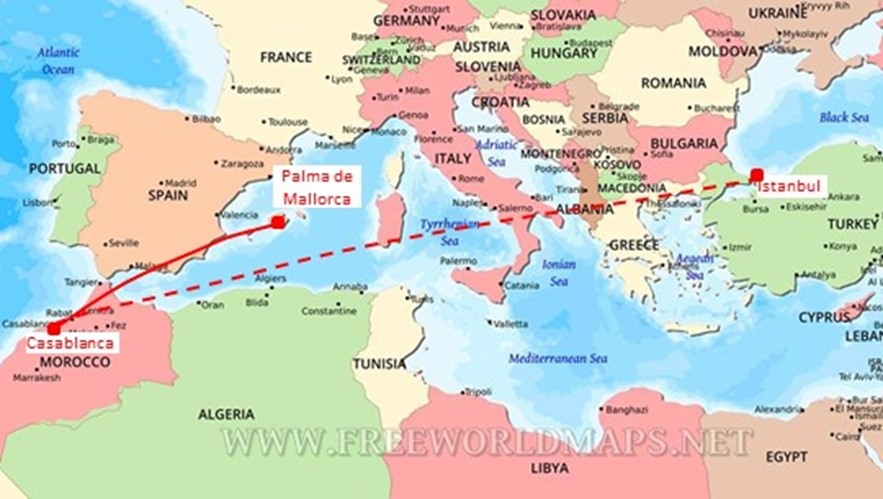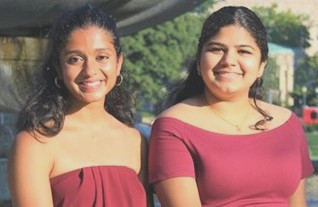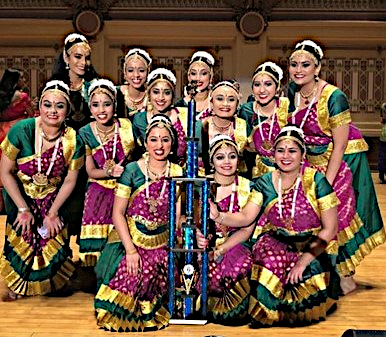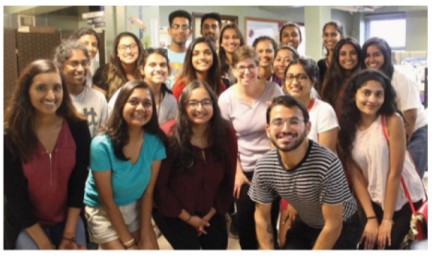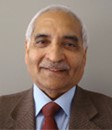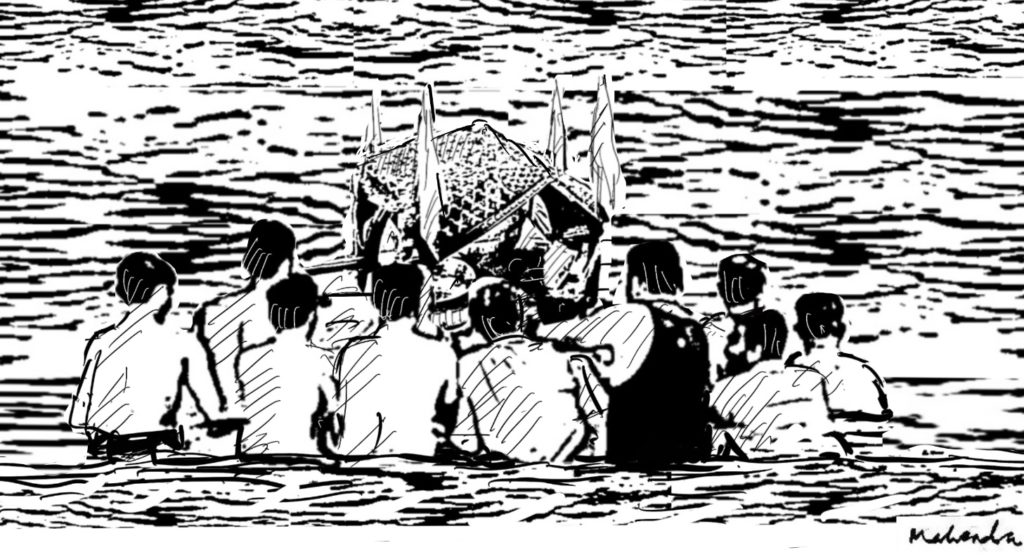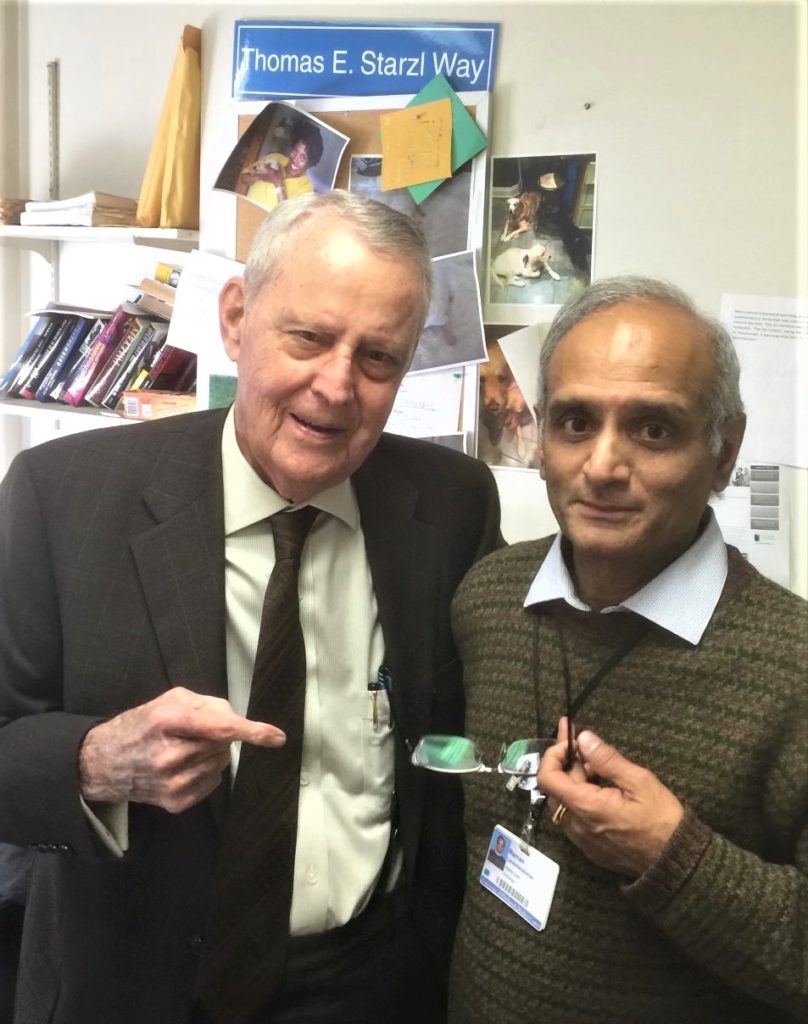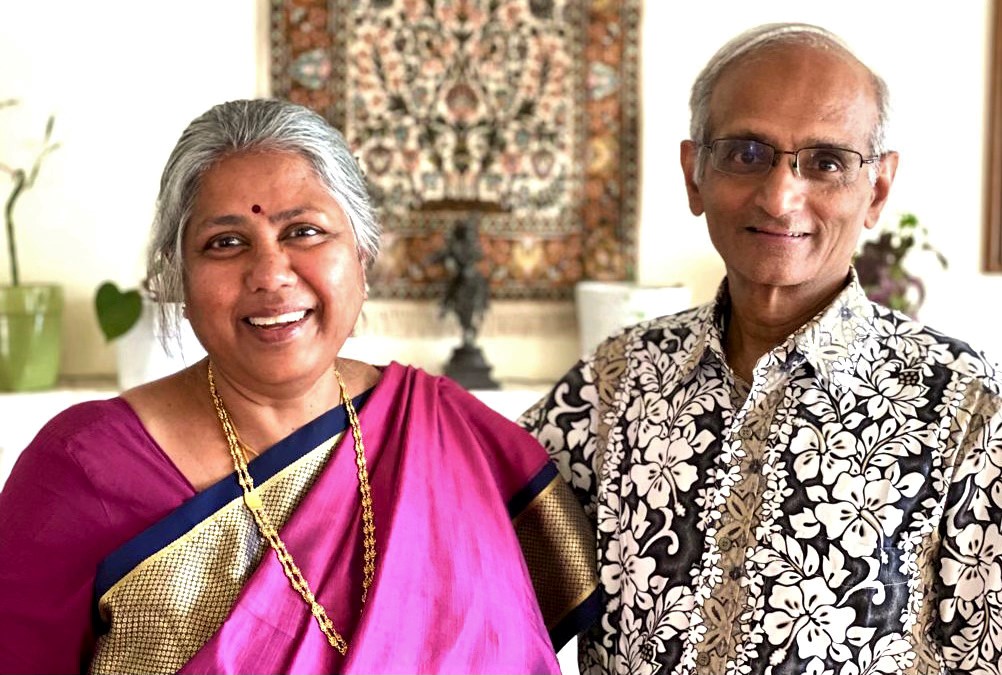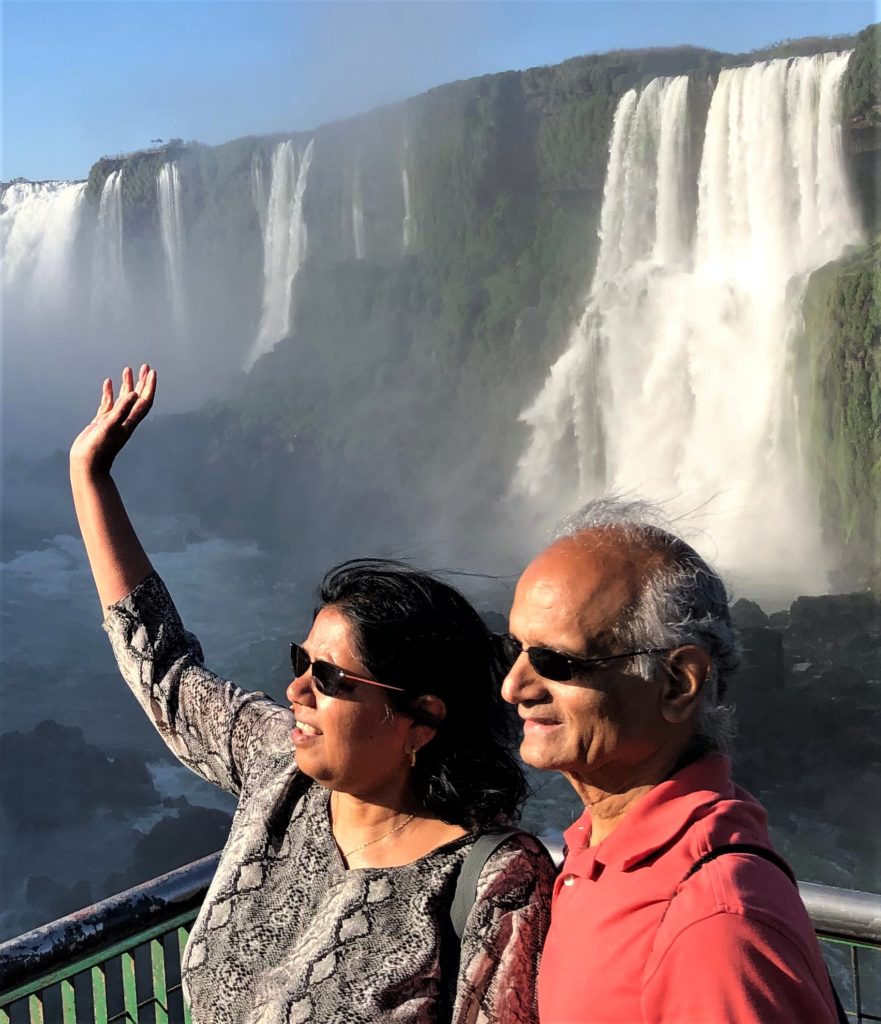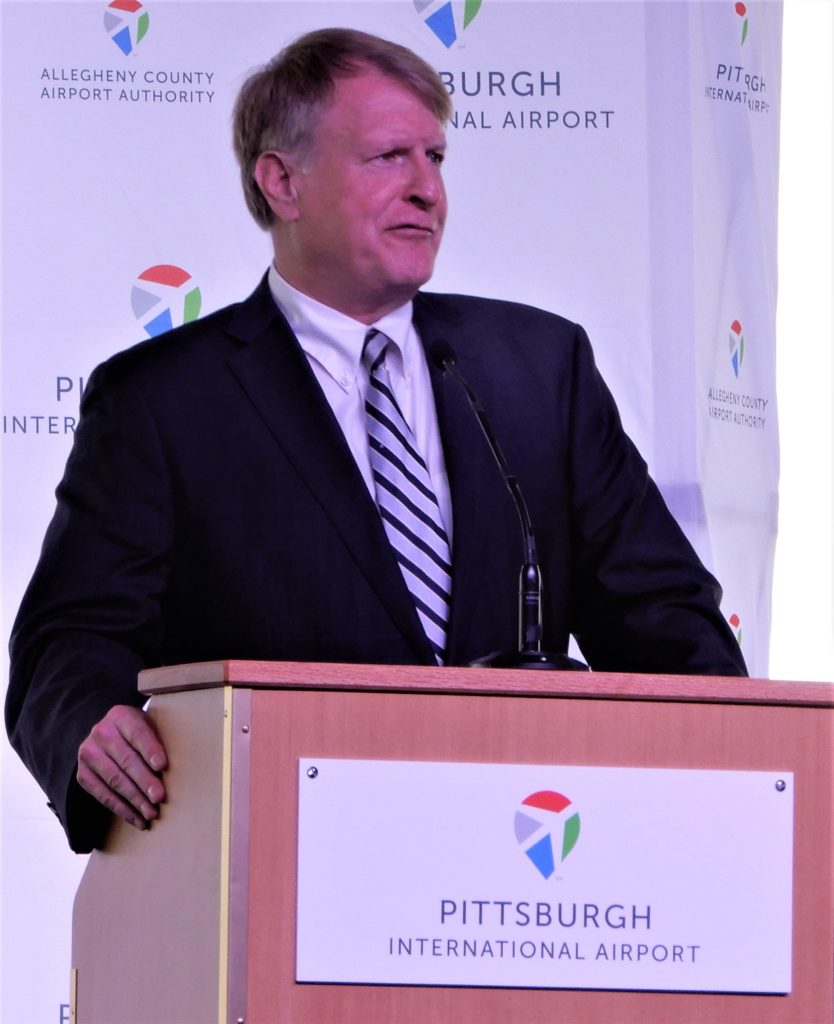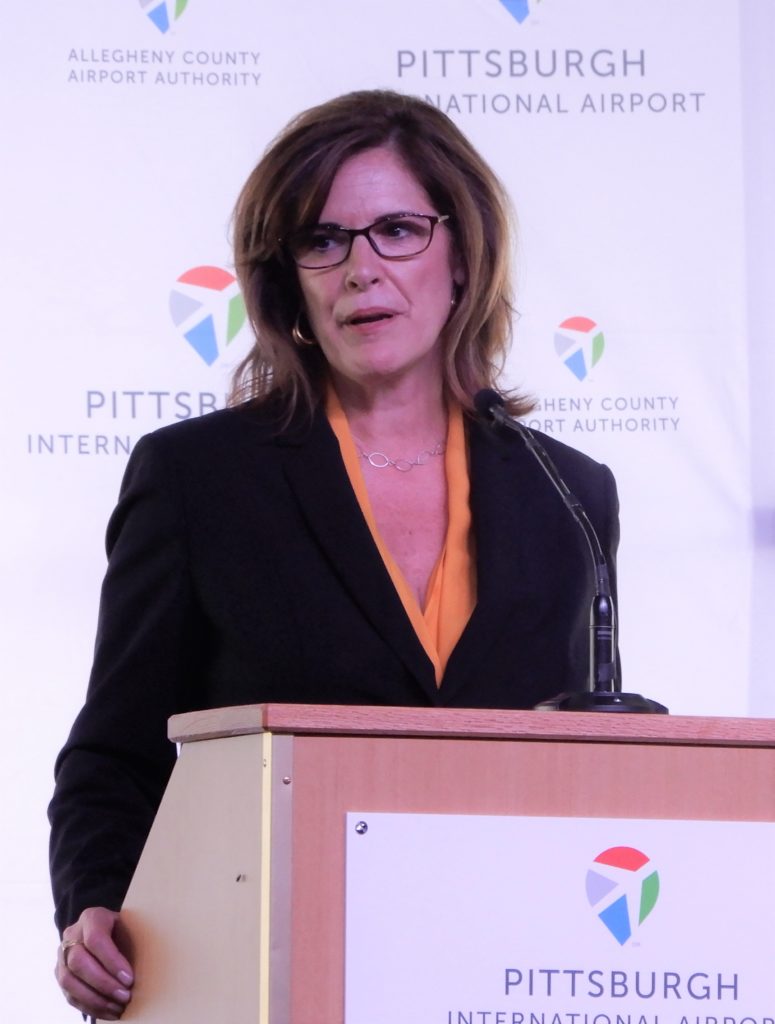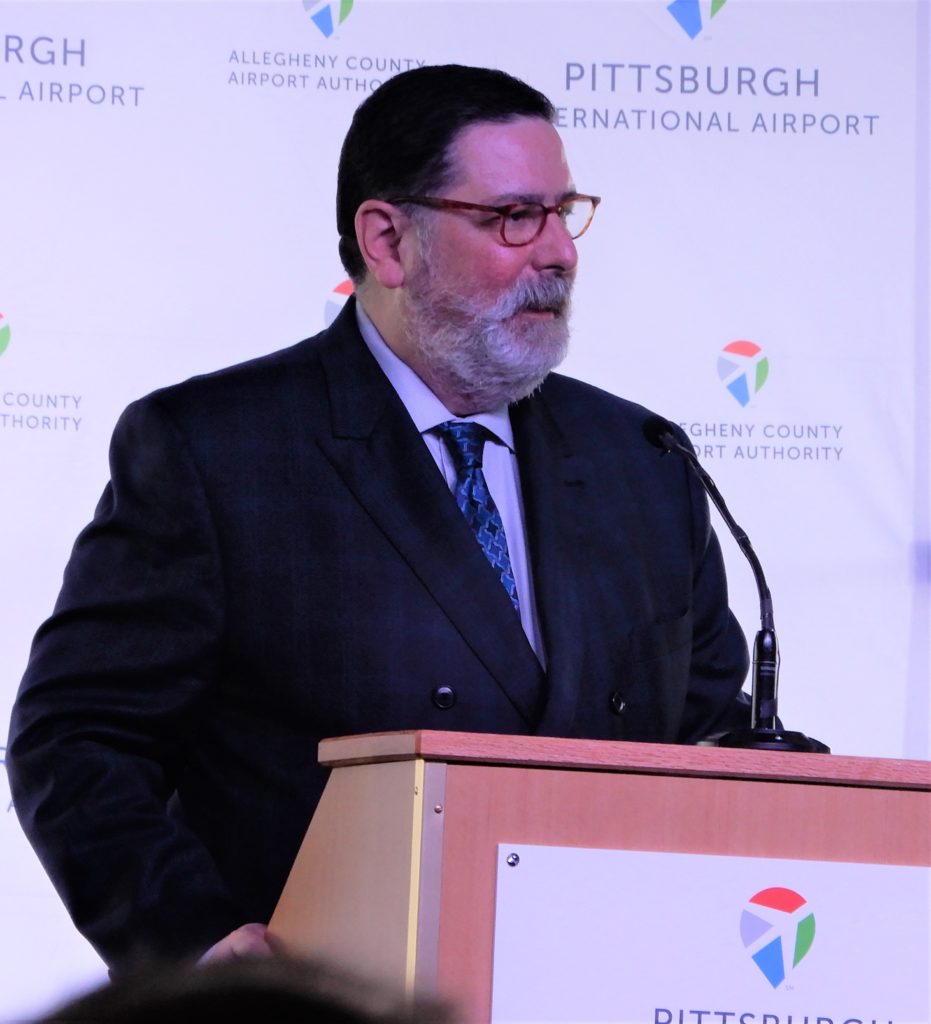Archive for category January 2022
“It’s a Mad, Mad, Mad, Mad, World!”
Posted by admin in January 2022, Past issues on December 7, 2021
On November 6, Air Arabia Maroc’s flight 3O437 from Casablanca, Morocco (departure 5:00 PM local time), was headed to Istanbul, Turkey, a 4½ hour flight. Over one hour into the flight, the plane declared a medical emergency and was diverted to land on the island of Palma belonging to Spain because a passenger was asking for medical assistance.
On landing at Palma de Mallorca, the Spanish police said the patient appeared to be in a diabetic coma and was rushed to the local hospital with his companion. The Moroccan air traveler, it appears, feigned the medical emergency to divert the flight, ostensibly to enter Europe, because, at the hospital, doctors found the man to be in normal health. Besides, the police said, the person accompanying the patient fled as soon as they arrived at the hospital.
Meanwhile, as the plane was parked on the tarmac, after some time, twenty-one passengers jumped out of the plane trying to flee the airport. Twelve of them, who spoke French, were arrested, and the others escaped. The supposedly “sick” man was later arrested for “helping with illegal immigration and violating Spanish immigration laws.” All except one among the 20-plus people in this episode were Moroccans.
Police suspect this was a novel and “unprecedented” way for people wanting to enter Europe illegally. They are investigating whether “the whole episode was an orchestrated event or an isolated freak incident.” The investigation is continuing.
A Spanish law enforcement official said, “Those who fled will be prosecuted for non-compliance with aviation safety rules and illegal entry into Spanish territory, and will be deported to their country of origin.” None of them applied for political asylum. Details here: www.tinyurl.com/Ppl-Flee-MedEmrgncy. ∎ — END
Cynically Sublime — The Power of Wealth
Posted by admin in January 2022, Past issues on December 7, 2021
Almost instinctively, people in all societies at all times throughout history have pursued wealth, often single-mindedly. We cannot blame them, for this is how some of the great minds cynically looked at wealth:
1. He who has wealth is deemed noble, a scholar, proficient in the scriptures, discerner of tastes, an eloquent speaker, and attractive to even look at. All qualities are dependent on wealth.
2. Wealth is class, wealth is beauty, wealth is learning, wealth is fame, What can those deprived of wealth aspire to?
3. Good qualities are attained by wealth, not wealth by good qualities. The wealthy ones are served by the ones with good qualities, not the other way around.
4. The old, the famous, the learned, the skilled, the valorous, the ones well-versed in the scriptures, poets, noble men, all look at the wealthy and declare, “May you be victorious. May you live long!”
5. The poor are loathed in their own homes. The rich have affectionate relatives even in the other worlds.
Can you guess who is the author for each of the above? E-mail thepatrika@aol.com for the answer. — By K S Venkataraman ∎ END
On Saturday February 19, 2022 — By the Students of Pitt A Competitive Indian Classical Dance Program Raising Funds for A Good Cause
Posted by admin in January 2022, Past issues on December 7, 2021
By Stuthi Iyer and Roma Usgoankar, Dhirana, Pittsburgh
Dhirana is Pittsburgh’s premier competitive Indian classical dance event, hosted annually by students from the University of Pittsburgh. It is the only nationally recognized competitive program featuring Indian classical dance styles such as Bharatanatyam, Kuchipudi, Kathak, and Odissi. Every year, eight collegiate Indian classical dance teams from across the nation are invited to compete in the Dhirana event. World-renowned judges, who are dance teachers or practicing artistes (often both) and committed to preserving the tradition of these ancient art forms, evaluate the teams on nritta (intricate footwork), mudras (hand gestures), abhinaya (facial expressions), and other aspects of the dance. Every year, hundreds of people come and enjoy this spectacular program, immersing themselves in the ancient Indian story-telling tradition.
After hosting Laasya 2012, Nrityamala, the host team, created Dhirana with your support and the enthusiastic involvement of students to foster interest in Indian classical dances and raise funds for a Pittsburgh charity. All proceeds from ticket and food sales at Dhirana go to the Birmingham Free Clinic located in the South Side in Pittsburgh.
The Birmingham Free Clinic provides for the uninsured community-based collaborative critical medical care with compassion and dignity. The services offered at the clinic include cardiology, free eye care through Guerrilla Eye Service, ear nose and throat, dermatology, pediatrics, smoking cessation, diabetes, and gynecology. The clinic depends on volunteer teams of physicians, pharmacists, and nurses. In a single year, the clinic provides treatment to more than 3,000 patients, and the number is only increasing, and they need all the help they can get.
During the COVID-19 pandemic, with increased job insecurity and unemployment, more and more people depend on the clinic for their medical care. Dhirana is pleased to announce that over the past TEN years, we have donated $105,000 to the Birmingham Free Clinic, which has funded a 12-lead EKG device for the clinic, covered medication costs for patients, provided a consistent source of income for the Clinic’s annual budget, and most importantly, positively impacted the lives of thousands in the Pittsburgh area.
This year, we are striving to make our show bigger and better than ever. To put on a show of this magnitude, we depend on your generosity and support to cover the $16,500 expenses. We have been supported for the past decade by the Srinivasa Prasad International Foundation for the Performing Arts (SPIFPA).
Please support our efforts by reaching out to Dhirana’s Sponsorship Chairs, Stuthi Iyer and Roma Usgoankar, at dhirana.sponsorship@gmail.com, and take a look at our Sponsorship Packet at shorturl.at/pzMW2. We hope that you will join us on Saturday February 19th, 2022, at Soldiers and Sailors Memorial Hall. Please follow us on Facebook or stay updated at dhirana.com for ticket sales and updates! ∎ — END
Recalling My Own Aquatic Skills Growing Up in My Village in Gujarat
Posted by admin in January 2022, Past issues on December 7, 2021
By Harilal Patel, Monroeville, PA
Editor’s note: Mr. Harilal Patel, a long-time and successful entrepreneur in our area, is also active in the Pittsburgh Gujarati Samaj and the Hindu-Jain Temple. In 1978 he displayed his aquatic skills at the Three River Regatta by swimming across the Allegheny River from the North Side to Point State Park.
The story in the last issue on our instincts to display our skills in front of the public brought memories of my own younger days. Like Todittalai Vizhuttandinaar recalling the aquatic skills of his young days in his 2000-year old Tamil poem, I too remember my own younger days growing up in Valam, a large village with a long history, in Mehsana District, 50 miles north of Ahmedabad, Gujarat.
We had — and still have — a large talaab (lake) approximately 0.7 mile wide when it is full after the monsoon, with water 50 feet deep at several spots. One side of the lake had four large ghats for people to bathe. The opposite side was for buffaloes, cows, goats, and camels for their water needs. Around the talaab, we had a hospital, and rows of jamun, mango, and tamarind trees. And three temples.
Summertime drew us to the talaab, not just for bathing, but also for displaying our swimming skills. Competition among us was keen. Holding our breath and staying under water for the longest period was a game we reveled in. The daring among us swam to the deepest spots. Like the Tamil poet Vizhuttandinaar, we would reach the bottom of the talaab and come out with a fistful of gravel as proof that we had reached the bottom.
During August-September the village celebrated a festival with over 100 skilled swimmers carrying, while swimming, a palki (palanquin) with the deity (Krishna) across the talaab, with hundreds of villagers admiringly watching from the banks. The event ended with people carrying the palki in a procession into the village while chanting Bhajans. ∎ — END
From Wall Street to Onesies: Pallavi Golla’s Entrepreneurial Journey
Posted by admin in January 2022, Past issues on December 7, 2021
By Aire Reese, Pittsburgh, PA
When Pallavi Golla had her first son, Vyan, in 2015 she never thought her own problems as a first-time mother would be the start of a business venture. Pallavi was born and raised in the Franklin Park neighborhood of Pittsburgh. After graduating from Sewickley Academy, she attended NYU Stern School of Business majoring in Finance and went on to work in hedge funds for many years before attending business school in California.
After returning to Pittsburgh, Pallavi and her husband Mukul Patil started their family with their first son. She enjoyed taking Vyan on walks in a stroller but noticed that while she stayed dry in her activewear leggings and T-shirts, he would get hot and sweaty in cotton baby clothes. Their time was cut short because he would get heat rash. At night, traditional sleepwear would make him sweaty and fussy.
Pallavi started to wonder whether the same fabric used in adult active-wear could be used to make better baby clothing. She quickly realized that technical synthetic fabrics for adults were laced with harmful chemicals that would not be safe for small children. “There were adult companies pushing the limits on fabric technology,” says Pallavi. “But for children, there wasn’t anything new or innovative.”
Today, Golla is the founder of Lark Adventurewear, a premium e-commerce brand that makes clothes for children, and also for adults now, from a proprietary and sustainable Softek bamboo knit. The touch & feel of this fabric is something you must experience personally. It is buttery soft, temperature-regulating, UPF 50 sun-safe, and made to last.
Every product Pallavi and her team design is laser-focused on the following: functionality that makes life easier for parents and more comfortable for kids. And her customers have taken notice.
Since its founding in 2017, Lark Adventurewear has gained a loyal following on social media with over 60,000 followers and a passionate customer base extending from size 3-months through adult 3XL. Her company was featured in Vogue India, Inc Magazine and Forbes. But Golla is more interested in what her customers say. Hearing stories about a child having less eczema symptoms, a 6-year-old sleeping better through nights in Lark PJs, or providing the “best joggers I’ve ever had” to a tired mother is the feedback that keeps her working harder.
What once started in the spare bedroom of her home as she packed orders with her two small children has blossomed into a fast-growing e-commerce business with a warehouse in Central PA. Lark is on track to triple its year-over-year sales in 2021. While the road to success hasn’t been smooth, Pallavi says “I’m continually learning and trying to make better products for my customers. The best advice I can give anyone interested in pursuing a business idea or creating something new is to enjoy trying, failing, growing, and experimenting to learn what works.” ∎ — END
Dr. Raman Venkataramanan: A Portrait in Humility
Posted by admin in January 2022, Past issues on December 7, 2021
By Manjari Kulkarni, Upper St Clair, PA
Note: Manjari Kulkarni was born and raised in Pittsburgh. She practices orthodontics in the South Hills and lives with her family in Upper St Clair.
Almost daily, the mild-mannered professor of Tamil origin crossed my path as we began our days at the University of Pittsburgh’s Salk Hall, the location of the Pharmacy and Dental Schools. On several occasions, as we rode the elevator, Dr. Venkat (whom my parents endearingly call “the Pharmacy Venkat”) shared with me several life lessons, as he would with his own pharmacy students. Little did I know that this quiet professor who I would often see smiling behind the lens of a camera at big parties in social gatherings, is a hero among us.
Dr. Raman Venkataramanan is Professor of Pharmaceutical Sciences at the University of Pittsburgh School of Pharmacy. He received his B.Pharm from the University of Madras and M.Pharm from BITS, Pilani, India; and Ph.D. from the University of British Columbia, Vancouver, Canada.
After a postdoctoral fellowship at the University of Washington, he joined the University of Pittsburgh in 1980 as faculty. The adage “Luck favors the prepared,” applies to Dr. Venkat perfectly. In 1982 he was approached to work with the world-renowned transplant surgeon, Dr. Thomas Starzl, to conduct clinical research on anti-rejection drugs for liver transplants. Cyclosporine was the most researched drug for anti-rejection then, and the biggest challenge in organ transplants was solving the problem of the rejection of the transplanted organ by the recipient’s body.
Dr. Venkat vividly recalls Dr. Starzl visiting him in his office, holding a small bottle of a chemical he had learned about at a conference in Japan. He asked Dr. Venkat if he knew what this bottle held. Dr. Venkat knew this was a preliminary chemical studied as a possible anti-rejection drug for liver transplants. After this meeting, Dr. Starzl recruited Dr. Venkat to be a lead researcher on this product. The chemical, at that time, was called FK-900506. Dr. Venkat and his colleagues studied its use in small and large animal transplant models.
Eventually, the chemical, called FK-506, became known as Tacrolimus, the primary immunosuppressive drug currently used in liver as well as other transplants. This was one of the few drugs to get the quickest FDA approval due to the efforts of Dr. Venkat and his colleagues. This work made Pittsburgh a leader in organ transplants. Dr. Venkat considers himself blessed that he directly worked with patients to see how his efforts were helping transplant patients. Along the way, Dr. Venkat also published nearly 400 research papers.
In October 2021, the American Association of Pharmaceutical Scientists (AAPS) honored Dr Venkat with its prestigious Distinguished Service Award, appreciating his lifetime service as a member of AAPS. This was for him the culmination of a string of recognition he received from his peers. Details here: www.tinyurl.com/VenkataramananPeerRecognition
Inspired by his grandparents, Dr. Venkat chose healthcare as his career calling. Unable get into medical college in Tamil Nadu, India despite his academic excellence, he chose pharmacy as an alternative. His greatest interest has been teaching and he is passionate about sharing what he has learned from his countless mentors and personal heroes.
Outside of pharmacy teaching and research, Dr. Venkat teaches Sanskrit he learned from Shri Rajagopala Iyer in India (and later getting it refreshed in Jyotsna Kalavar’s classes here) to kids at the Chinmaya Mission,
Dr. Venkat, again with humility, describes his wife Padma as “the brainy one,” who is always learning and changing to keep herself sharp. He says, “I never could have had any success without Padma’s support.” Dr. Venkat, reflecting on turning 70 recently, quotes from Vivekachoodamani attributed to Adi Sankara, “जन्तूनां नरजन्म दुर्लभम्,” Jantunaam narajanma durlabham, “Being born as a human among the living is rare.” And he adds with a smile. “And then, being able to do what we are passionate about is a bonus.” Who can disagree with that? ∎ — END
Pittsburgh Airport Breaks Ground for $1.4 Billion New Airport Terminal
Posted by admin in January 2022, Past issues on December 7, 2021
The Pittsburgh International Airport, owned and managed by the Allegheny County Airport Authority (ACAA), is getting a much-needed modernization. On Thursday October 14, 2021, ACAA formally broke ground at the construction site for a new terminal. County Executive Rich Fitzgerald, the ACAA’s CEO Christina Cassotis, its chairman David Minnotte, and Pittsburgh’s Mayor Bill Peduto, among others, addressed a gathering of over 300 people — the region’s elected officials, business and labor leaders, contractors, and invited guests.

One point in Fitzgerald’s speech was encouraging: after losing population for the last six decades, Allegheny County’s population increased in the 2020 census. It is now 1,250,000, up by 2.2% (or 27,000), compared to the 2010 census. And the county population is more diverse (24% in 2020 compared to 18% in 2010), and younger, the features recognized as catalysts for growth.
The current layout of Land- and Air-side Terminals with 75 gates in four concourses, and a 0.5 mile-long connecting train, is too unwieldy, too old (opened in 1992) and too costly for upkeep for the 170-plus daily flights today. At its peak two decades ago, the airport handled nearly 700 daily flights with 20 million passengers/year passing through its gates.
The new terminal will meet its current and future needs; will reduce operating costs and carbon footprints; will give better ambience for departing passengers from check-in, security through boarding; and for arriving passengers from landing, baggage claim through leaving the airport.
How we ended up with 75 gates in four concourses: In the 1980s, with US Airways’ hub expanding at the Pittsburgh airport, the number of passengers passing through its gates increased rapidly. Most were transit passengers changing flights to reach their final destinations. So, the then state-of-the-art terminal with 75 gates in four concourses was built in 1992 to meet the airline’s demands.
Then the 9/11 disaster in 2001 devastated the airline industry. Meanwhile, US Airways was expanding its presence in Philadelphia. When US Airways closed its PIT hub (and moved to Philadelphia), the volume of passengers at the Pittsburgh airport plummeted to just over 6 million per year. Over 15,000 jobs vanished in the region. This devastated the airport’s operations and the region’s image, even as we were struggling to recover from the steel industry’s death here in the 1970s.
Ironically, we learned the same bitter lesson twice: overdependence on steel devastated the region when the Mighty Steel died in the 1970s, and over dependence on US Airways (accounting for over 85% of flights at its peak at PIT) devastated the airport when it closed its hub here.
Besides, before shutting down its hub, the bad faith in which US Airways had negotiated with our region’s elected officials and airport officials left deep scars. So, not many at ACAA and among our elected officials wanted the airport again to become a big hub for another air carrier. Twice bitten, thrice shy. So, seeking regional taxes to fund airport modernization was just out of question.
Then came Nature’s boon in the form of Marcellus shale found in abundance in Pennsylvania, West Virginia and eastern Ohio. The shale lying between 5000 to 8000 feet underground is a source for natural gas, a clean energy fuel for domestic & industrial use and electric power generation — it has the smallest carbon footprint and no solid waste products such as fly ash, as with coal. Radio talk show hosts boast that natural gas for Pennsylvania is what is petroleum is for Saudi Arabia.
Over 9000 acres of land around the airport belong to ACAA. The airport allowed a local gas company to drill 45 gas wells in its land to generate revenue for the next several decades. With the natural gas running five generators and 10,000 solar panels already installed, the airport’s microgrid generates 20 MW of power while its needs are only 14 MW. (source: www.tinyurl.com/Microgrid-at-PIT).
Meanwhile, the Pittsburgh region slowly has redefined itself in terms of financial service companies, higher education, innovative technologies (robotics and AI), as an incubator for startups, and healthcare industries. Along the way, the Pittsburgh airport too grew. From barely 70 daily flights after the US Airways shut down to over 170 daily flights today; from just over 6 million passengers/year at its nadir to over 9 million passengers/year now; from just under 10 air carriers to 17 air carriers at PIT now with more nonstop flights to more cities. The airport’s freight handling too has increased over the years.
Deciding not to seek funds from local taxes, ACAA took the plunge to modernize the airport terminal with its own resources. The work started as early as 2017, but the 2020 Covid pandemic stalled the work.
With the fear of the Covid-19 receding, the 4-year, $1.4 billion modernization project has started. Its main features as detailed by Messrs. Fitzgerald, Cassottis, and Minnotte in their speeches are:
1. The project is funded without local taxes. The businesses that use the airport — the airlines who use the airport (landing fees and gate rentals), the concession shops at the terminal, and passengers using the facility will bear the cost. The funds will be raised through bonds issued by ACAA on its own strength. (Note: For the same reason, if the modernization results in a resurgence of the airport’s fortunes generating good net incomes year after year, one wonders whether ACAA will be obligated to fund projects outside the airport — such as a light rail transit from the airport to the city. And passengers will see increases in parking fees and charges for food and drinks at the airport — as in airports in New York, Chicago…)
2. The land-side terminal and the People Mover train will be gone (see the picture on the cover page), and the air-side terminal will be refurbished with new check-in counters and a baggage handling facility and passenger pick-up systems.
3. The modernization is for the region’s current and future travel needs, and not for making the airport a big hub for another air carrier. (Bad experience with US Airways and the good olde grandmotherly advice not to put all your eggs in one basket).
4. The existing concourses will be retained and refurbished, but with fewer gates with better ambience. More concession stands and shorter times for passengers to reach departure gates and retrieving baggage on arrival.
5. A multilevel parking lot walkable from the baggage claim area.
6. State-of-the-art design using natural light, fresh air, attractive ambience, open space, and for mass transit, taxis and passenger pickup… …
7. Recycling 75% of the demolition debris from the existing structures (such as concrete slabs) and re-using them for construction.
8. Childcare services during construction on site for the hundreds of men and women working there. Workplace safety from the get-go.
9. Over 14,000 direct/indirect jobs created by contractors and subcontractors with taxes in millions of dollars feeding into local governments.
In 2025, we will be in for a grand dedication ceremony for a stunningly ultramodern reincarnated airport terminal. And also be ready for higher charges for all services such as parking fees, baggage carts, and all concessionaires at the airport terminal. ∎ END
Dr. Raman Venkataramaman’s Peer Recognitions
Posted by admin in January 2022, Past issues on December 4, 2021
1. Distinguished Scientist Award AAiPS (2016)
2. Honored/invited speaker at Agents for change – Alumni recognition Symposium organized by the University of British Columbia Vancouver Canada
3. APhA Tyler Award for Stimulation of Research (2011)
4. University of Pittsburgh- Provost’s Award for Excellence in Mentoring (2009)
5. ACCP BMS Award for Mentoring in Clinical Pharmacology (2009)
6. Ranbaxy Research Award in Pharmaceutical Sciences, India (1998)
7. Distinguished Research Scientist Award by The Institute of Kidney Diseases and Research center and the Institute of Transplantation, Ahmadabad, India (1998)
8. Fellow of the American Association of Pharmaceutical Scientists (1996)
9. Fellow of the American College of Clinical Pharmacology (1989) ∎ — END

